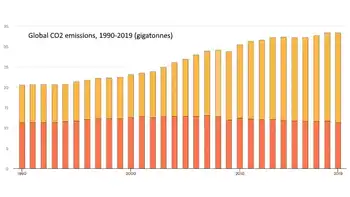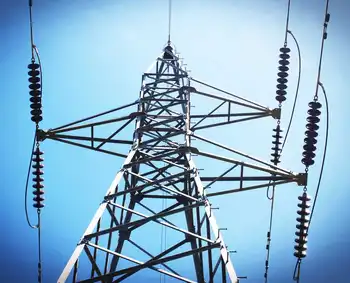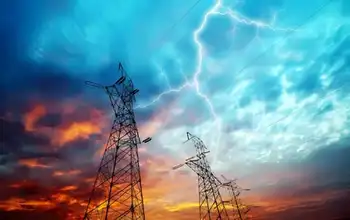Documenting the real-life payback of LEED certification
By Knoxville News Sentinel
Arc Flash Training - CSA Z462 Electrical Safety
Our customized live online or in‑person group training can be delivered to your staff at your location.

- Live Online
- 6 hours Instructor-led
- Group Training Available
The research and education consortium moved in January into its $20.3 million, 75,000-square-foot Oak Ridge headquarters, which is the first non-government facility in Tennessee that has achieved LEED gold certification.
Its developers suggested aiming for a less-stringent certification, but "we're a pretty high performing organization," says Rac Cox, ORAU's facilities director. "Why would we want to just take silver?"
The organization is now beginning to see the investment pay off, he says.
Although he needs a few more months and a little more data to prove his theory, Cox believes the results will show that an extra 5 to 7 percent in capital costs required to obtain the certification was worth the investment.
"We see it being a more efficient building, it's tighter," he says. "We feel good about the air quality, and we've got data that we measured before occupancy. We know that our gas and electric bills are less than comparable space for offices."
The ability to measure such performance is crucial to understanding the value of sustainability in the construction industry.
Both LEED critics and proponents are asking, "What is LEED worth?" as they weigh whether and how to incorporate the guidelines into new construction projects.
Cost/benefit analyses vary widely, and statistics from the U.S. Green Building Council are derived from computer models of anticipated energy and water savings rather than data from certified buildings.
Such models don't always take into account the variables that exist when human beings occupy a space, according to Glenn Richters, principal architect with Benefield Richters, the Knoxville architecture firm that designed the ORAU building.
"USGBC is feeling pressure to come up with these numbers," he says. "Buildings don't use energy, people do."
When ORAU decided to go the LEED route, Cox says, he wasn't sure what to expect in terms of added costs. His research found claims that the more stringent construction and equipment requirements, plus the cost of commissioning the project, could run the bill up 8 to 15 percent over the price of traditional construction.
He credits the collaboration of Partners Development, Benefield Richters and builder Blaine Construction, all Knoxville firms, with keeping final costs in check by careful planning on the front end.
"This wouldn't have been successful without (the architects) putting into design documents and specifications of this building what's required of the general contractors and their subs," he says. "That team was very important."
For Russ Watkins, president of Partners Development, sustainable construction is a matter of principle and pocketbook. Watkins managed projects for the firm in Europe, Asia and South America before returning to the U.S. in 2006 to lead the company. Overseas, building sustainably has been an assumption for years, and Watkins oversaw a number of LEED-type construction projects.
"I can tell you as the owner of different types of buildingsÂ… sustainable development has a definite impact in terms of operating costs," Watkins says. "If I can't get payback in seven to nine years, I'm not going to do it."
Cox says ORAU depended on models to estimate energy use could be reduced by 20 to 25 percent and water usage by 35 percent.
So far so good, he says.
The data for the first 10 months of operation - discounting the first couple of months for adjustments that needed to be made to the systems - shows a favorable comparison with the campus's next newest office building, an adjacent 50,000-square-foot, five-year-old structure.
The LEED models of potential savings are "probably a little optimistic - but not unrealistic," Cox says. "Will (the new building) meet the model? Our preliminary data says probably not, but it's going to be close. I think (the results)Â… will show that there is an expected savings in the mechanical, in the heating and ventilation costs and in the lighting costs. We are seeing better performance on both of those."
Getting the most bang for your buck in a LEED building, however, requires attention to detail.
Cox and his department pay close heed to performance of the systems and make adjustments where necessary. Sometimes those adjustments involve tweaks to the HVAC system or network of sensors and controls that manage energy use throughout.
Recently, the building managers turned off one motion detector governing the lighting of a room because an employee, sitting nearly motionless as he cut paper with an X-Acto knife, found himself suddenly working in the dark.
"We put that room on a switch," Cox says.
While arguments surrounding LEED likely won't die anytime soon, part of the struggle with green construction has to do with a culture focusing on short-term costs rather than long-term benefits, says Richters.
Richters says he at first was skeptical of LEED's commissioning process for certification, believing that it might be an unnecessary layer of cost and bureaucracy. The architect found that the thorough inspection actually improved the performance of the building and ensured the quality of construction.
"(Sustainable building) costs more than the way we do it now, but we're not doing a good job right now," he says. Energy modeling and the commissioning or inspection process are the major expense items of LEED certification.
Cox says ORAU also paid more to upgrade its HVAC system, for example, to qualify for more stringent LEED requirements.
"It's been amazing to me how (buildings) don't perform to the way their designed, so (with commissioning) we're able to get things corrected before occupancy," Richter says.
As part of recent updates to the LEED system of certification, buildings will have to report their performance, further demonstrating the value of the process, he says.
"We're a very cost-driven society," Richter says. "We have to create the incentive to look long-term, not just short-term."
Larisa Brass is a contributing writer to the Greater Knoxville Business Journal.











